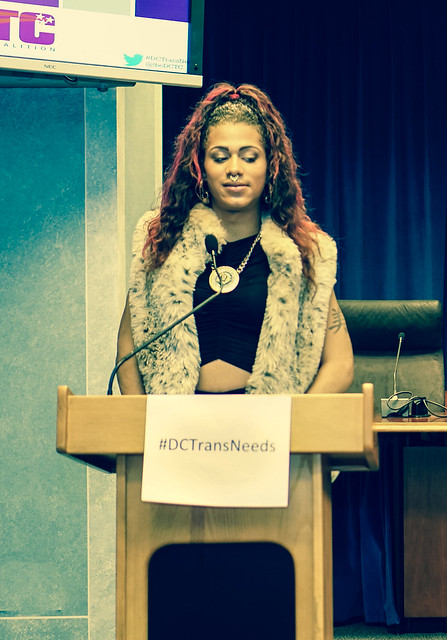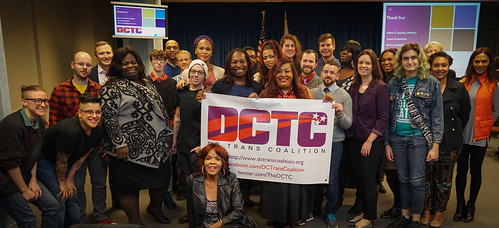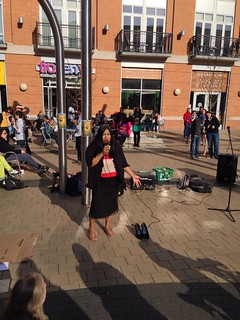The previous needs assessment for the Washington, DC, trans community was pretty well done, distributed on a 10-page PDF with helpful infographics. This takes things to the next level.
As the title says and the report reads, this is a professionally produced, helpful tool, to assist communities (and health care) in making sure everyone has what they need to achieve their life goals. That’s kind of the definition of social innovation.
The report includes all the right comparisons (in my opinion) – to the general Washington, DC population as well as the National Transgender Discrimination Survey, last done in 2011, with the 2015 report coming soon.
The link to the report has the best summary so I won’t duplicate it here. Of note – education is not protective in this population as it is for the general Washington, DC population.
I took a closer look at the health section.

Health – rampant discrimination with some hope
The findings in health care parallel what has been previously, with 19% of people denied care, and 30% receiving unlicensed care. And by the way, most insurance policies cover complications of unlicensed care even if they don’t cover transition care.
HIV continues to have an un-heard of prevalence that has tripled in transgender women of color:
Nearly one-third of all trans feminine respondents reported living with HIV, and an astounding 75% of those reporting living with HIV were persons of color. This incredibly high HIV prevalence is three times the 25% prevalence found in 2001 during a needs assessment conducted among trans women of color in Washington, DC.
This is important, because if you study the success of New York in extending life expectancy for its entire population, the areas of focus were: HIV, and substance use.

The hope part comes from the question about perceived health status. It’s the same overall for this population (84% good or excellent) compared to the general Washington, DC population (86%).
But if you look at categories of HIV infected, Denied medical care, Uninsured, Low income, perceived health status is much lower.
These are all things that health care can change, because right now it tends to make these things worse. Being transgender is in and of itself not a mental illness, the complications from receiving inhumane care causes mental illness. And what is health care here for? Not that.
When I asked whether this similar perceived health status was a sign of some resilience in the community, the important point was brought up: “not resilient enough to not attempt suicide” – with attempt rate of 34%, tracking previous national numbers. Again, unheard of in any community.
For those of you in health care, this helpful list describes what an optimal health care experience might look like.
A transgender health care center:
- This center would provide services that are specific to the trans community.
- The staff should be very diverse, with the leadership and staff being largely transgender.
- While some clinics in Washington, DC serve trans individuals, they are not necessarily a trans affirming environment.
- The center would provide wrap around services, including transition related care, primary care, mental health services, HIV prevention/treatment/adherence, harm reduction (e.g. syringe exchange), linkage to housing, employment counseling, and substance use treatment.
- The center would take a “harm reduction” approach. To use this approach is to “meet the consumer where they are.” This means that services are offered to consumers, providing them with the choice of what they feel they need, not what the provider deems to be the priority. Consumers would not be pressured or baited into services. For example, the clinic would not withhold hormone therapy if the consumer is currently using drugs.
- Transportation assistance would be provided (i.e. metro tokens).
- Ideally the health care center would also have housing available in the same building. E.g. Single Resident Occupancy rooms.
These models exist and they are affordable. Check out our trip to Vancouver Coastal Health. We’ve seen them.
And speaking of what health care is here for, it is also not just to deliver humane medical care. It’s here to change society as leaders, so people can live as their authentic selves, so that ultimately they need the health care that they need, no more, no less. Don’t forget that part/take your eyes off that prize.
I am delighted that a photograph I took in 2013 is used on the cover. When I heard Nico Quintana’s story that day, I kept asking “what does health care think it’s doing?” Since then, it’s been great to ask this question again and again, and watch the answer changing, to one that reflects better what health care is actually here for…. because we didn’t go into medicine to make people more unhealthy, and we did go into it to change everything 🙂 .
Here’s another photo I took that day in 2013. Think about it for any population or city you live in, it applies equally.
“Until everyone has what they need, we can’t say we are one city.” @casarubydc #health #equality #dc http://t.co/PIb2dJe3ga
— Ted Eytan, MD (@tedeytan) March 30, 2013
